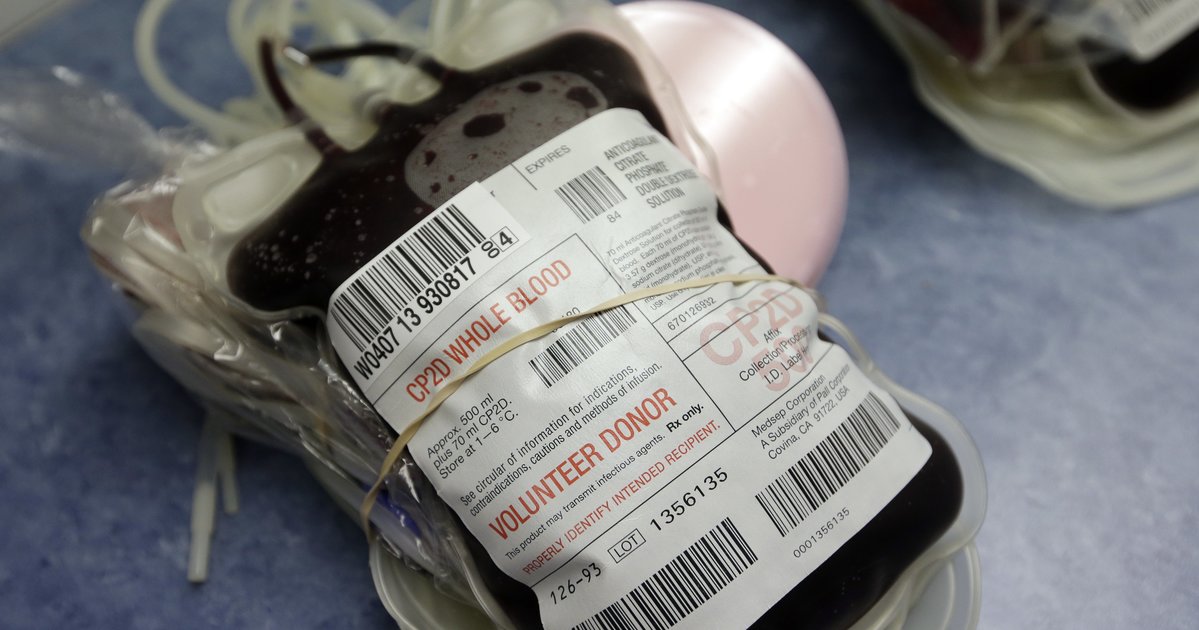A patient blood management program designed to limit the amount of transfused blood orthopedic patients undergoing common surgeries such as hip and knee replacement receive was associated with fewer transfusions, reduced blood use and improved outcomes, reports a study published in the Online First edition of Anesthesiology, the peer-reviewed journal of the American Society of Anesthesiologists (ASA).
“A growing body of literature shows reducing blood use in surgery reduces risks to patients while also lowering costs,” says lead author Steven M. Frank, MD, director of the Johns Hopkins Health System Blood Management Program. “However, there is a persistent impression that orthopedic surgery patients require a higher hemoglobin transfusion threshold than other patient populations.”
The AABB (formerly the American Association of Blood Banks) guidelines call for most patients to be given a blood transfusion when their hemoglobin level drops to 7 grams per deciliter (g/dL) of blood. But for orthopedic and cardiac surgery patients, the guidelines call for giving a blood transfusion when their level drops to 8 g/dL.
“It may seem like a small difference, but before our blood management program was implemented, one third of blood used in our hospital was transfused at levels between 7 and 8 g/dL, so a lot of blood was given in that intermediate zone,” Frank says. “A substantial number of transfusions could potentially be avoided by lowering the threshold to 7 g/dL.”
Possible risks and adverse outcomes associated with blood transfusions include acute lung injury; transfusion associated circulatory overload (TACO), which causes excess fluid in the lungs; hemolytic (rupture of red blood cells) transfusion reactions, which most often occur from wrong or incompatible blood units being given; and infectious or viral transmissions.
In the study, researchers evaluated blood transfusion practices and clinical outcomes in all adult orthopedic patients over a four-year period, which covered the time in which the hospital implemented its blood management program. The study included 1,507 patients before the program was implemented and 2,402 after implementation.

(Image credit: Associated Press)
The blood management program consisted of 10 strategies to reduce transfusions, including only administering a single unit of blood unless the patient was actively hemorrhaging, administering the drug tranexamic acid during surgery to reduce bleeding, maintaining normal body temperature during surgery to reduce bleeding, adding pop-up alerts in patient electronic medical records to notify clinicians when the amount of blood ordered for a transfusion was above recommended levels, guideline compliance audits with provider feedback, smaller tubes to reduce blood loss from lab tests, and using newer surgical techniques to reduce bleeding.
After the blood management program was implemented, the percentage of orthopedic surgery patients who received blood transfusions decreased from 16.1 percent to 9.4 percent. The average hemoglobin threshold used to trigger a transfusion decreased from 7.8 g/dL to 6.8 g/dL. Overall blood use during transfusions decreased by 32.5 percent. In hospital-acquired complications fell from 1.3 percent to 0.54 percent, and 30-day readmissions fell from 9 percent to 5.8 percent. Improved outcomes were primarily recognized in patients 65 years of age or older.
“We found that in orthopedic patients, even with a lower hemoglobin trigger of 7 g/dL for blood transfusions, patients did as well or better than they did with a higher hemoglobin trigger level,” Frank says. “This is the first study to show that for most orthopedic patients — even elderly patients — a hemoglobin level of 7 g/dL appears to be safe.”
Frank says while the study does suggest that most orthopedic patients could be transfused at a hemoglobin level of 7 g/dL instead of 8 g/dL, this was not a randomized clinical trial.
“A trial formally assessing this lower hemoglobin trigger should be conducted before guidelines are changed to recommend a level of 7 g/dL for all orthopedic patients,” he says. “Furthermore, we treat the whole patient, not just their lab values, so signs and symptoms of anemia should also be considered.”
Blood transfusions were named the most frequently performed hospital procedure in the United States and one of the top five overused procedures by the Joint Commission in 2012.




